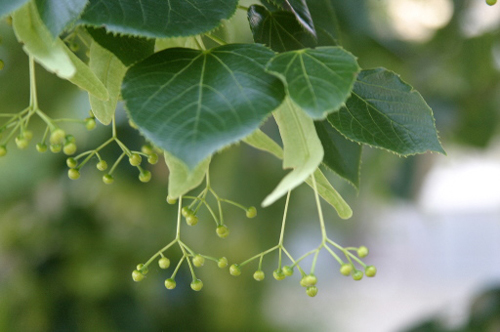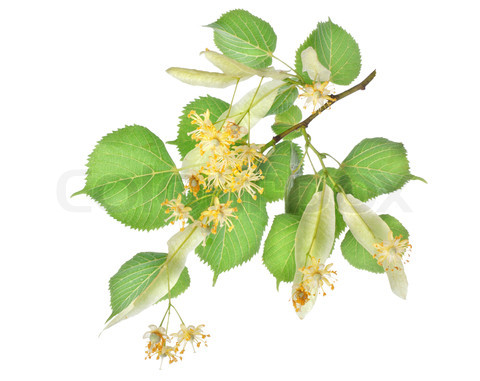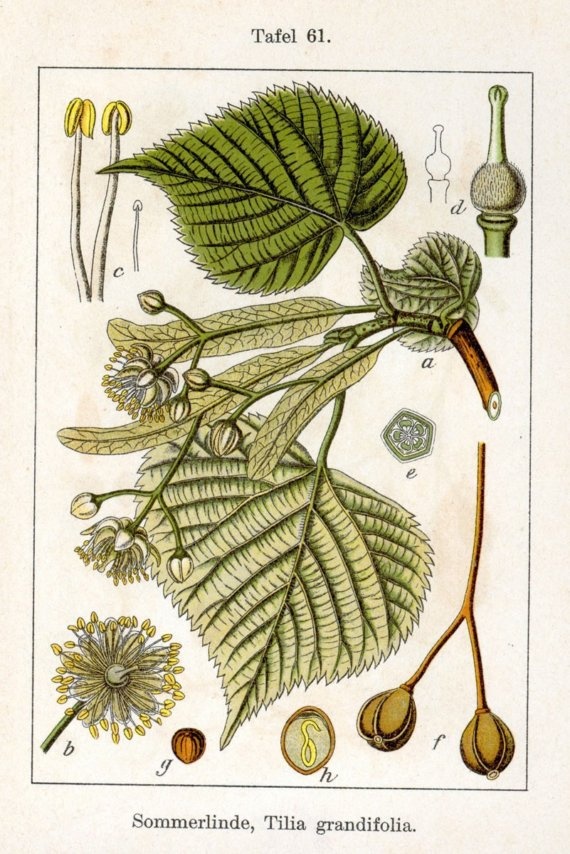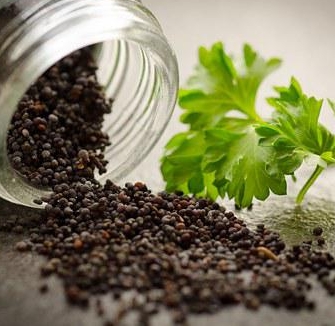Stay Grounded (and Soothed)
That heady, floral scent drifting along sidewalks and driveways? Linden trees—making urban walking a sensory delight—are indeed planted on purpose. Legend holds that the graceful Tilia was once the nymph Philyra, transformed by the gods to escape sorrow. Today, these fragrant guardians stand as living symbols of solace and transformation.
In Europe, linden tea—made from its delicate blossoms—has been cherished for centuries as a calming digestive and nervine tonic, beloved by both children and elders alike. Its ability to soothe frazzled nerves, gently cool fever, and nurture soft, irritated skin remains as relevant in modern healing as it was in ancient courts.
One of the most popular herbal teas in Europe, linden is enjoyed to calm the nerves and aid digestion and is safe enough for people of all ages to enjoy.
There are several different varieties, almost all of which are medicinal.

Linden flowers can also be added to tea when someone is experiencing a fever, as it’s diaphoretic properties help to warm the person up and increase sweating to help break the fever. It’s moistening properties also help the body to retain some of the water often lost during illness, thus helping to prevent dehydration.
Used long-term, linden has been shown to help reduce blood pressure.
Topically, linden blossoms infused into oil and water then made into a cream are an excellent remedy for dry, itchy, and irritated skin.
Its gentle and floral taste and smell make it a particular favorite of ours in teas, especially in this day and age of chronic stress and heartache.
The simple act of smelling linden blossoms often brings an ease to our senses; so the next time you are feeling like you need a break, take a walk outside to find a linden tree, and breathe deep…perhaps those city planners knew what they were doing afterall.

Herbal Highlights & Evidence
- Soothes the Nervous System
Linden is renowned for its moderate sedative and nervine properties—traditionally used to calm anxiety, soothe palpitations, and encourage rest. Its effect may involve modulation of GABA pathways, though human studies are still limited [1,3]. - Promotes Relaxation & Sleep
Herbal lore and preliminary studies support linden’s role in reducing excitability and supporting gentle sleep when consumed as a warm infusion at bedtime [1,3]. - Supports Circulation & Blood Pressure
Floral flavonoids like tiliroside, rutoside, and chlorogenic acid give linden mild vasodilatory properties—making it a traditional ally for stress-related hypertension. While the human evidence is anecdotal, animal studies hint at relaxing effects on the blood vessels [2,5]. - Diaphoretic, Expectorant, and Diuretic
A classic component in fever and cold formulas, linden promotes gentle sweating and urination and helps soothe coughs and catarrh. Commission E in Germany formally recognizes it for these traditional uses [3,5]. - Cooling, Moistening, and Soothing
Aromatic cooling and demulcent in its nature, linden eases heat, calms irritation, and hydrates the body—a perfect match for summer’s weariness or anxiety-driven tension [6,7]. - Gentle Skin Care
Infused topically, linden blossom tea or creams bring relief to dry, inflamed, or itchy skin through its emollient and anti-inflammatory qualities [3].

MATERIA MEDICA
Latin Name: Tilia spp.
Common Name: Linden
Family: Tilaceae
Parts Used: flower blossoms
Habitat: Native to Europe, linden has been planted in abundance in the US and can often be found lining roads and sidewalks
Actions: Antispasmodic, calming, diaphoretic, nervine, cardio-tonic, emollient, moistening, soothing, vulnerary
Energetics: sweet, moist, slightly warm
Key Constituents: Flavonoids (quercetin, hespiridin, kaempferol, rutin), mucilage (arabino-galactans), volatile/essential oil (farnesol, linalool, geraniol, eugenol, camphor, carvone, citral, citronellol, limonene), phenolic acids (caffeic acid), phytosterols (β-sitosterol)
Uses:
- High blood pressure
- Nervous palpitations
- Anxiety
- Tension
- Stress
- Trouble sleeping
- Fevers
- Dry, irritated, or itchy skin
Preparation & Suggested Usage
- Linden Tea: Steep 2 tsp of dried blossoms in 12 oz hot water for 10–15 minutes. Sip warm to calm nerves or soothe restlessness.
- Tincture: 1–2 mL (1:5 tincture in approximately 45% alcohol), 1–3 times per day, as gentle support.
- Dosage information from The Expanded Commission E by Blumenthal et al., Natural Standard Database, and The Herbal Handbook: A User’s Guide to Medical Herbalism by David Hoffmann
Safety & Considerations
- Sedative Effects: May cause drowsiness—avoid driving or operating heavy machinery post-consumption (WebMD, 2021).
- Blood Pressure: Use cautiously if hypotension or on blood pressure medications.
- Allergies: Rare reports of pollen sensitivity or skin irritation; discontinue if symptoms arise.
- Moderation Recommended: Max daily intake from teas or tinctures should not exceed 2–4 g to ensure gentle use (Drug Monograph, 2024).
Closing Reflection
Linden embodies soft strength—its fragrance, a whisper; its medicine, a balm. These gentle giants stand in urban spaces like sentinels of peace. A cup of linden tea brings that same hush into our scattered modern lives—cooling, calming, comforting the heart and mind.
References
- Dessinger, H. (2022, November 6). 8 benefits of Linden + tea and tincture recipes. Mommy Potamus.
- Healthline. (2023, November 26). 8 Surprising benefits of Linden tea. Healthline.
- Drugs.com. (2024, December 18). Linden monograph. Drugs.com. Retrieved from https://www.drugs.com/npp/linden.html
- WebMD. (2021). Health benefits of Linden tea. WebMD. Retrieved from https://www.webmd.com/diet/health-benefits-linden-tea
- European Medicines Agency (EMA). (2011). Final assessment report: Tilia spp. EMA. Retrieved from https://www.ema.europa.eu/en/documents/herbal-report/final-assessment-report-tilia-cordata-miller-tilia-platyphyllos-scop-tilia-x-vulgaris-heyne-or-their-mixtures-flos-first-version_en.pdf
- LearningHerbs. (2023). Linden uses. LearningHerbs. Retrieved from https://www.learningherbs.com/blog/linden-uses
- Thés & Traditions. (2023). Lime leaf infusion, your new wellness asset. Thé & Traditions. Retrieved from https://www.thes-traditions.com/en/content/linden-tea
- Commission E monograph included via Drugs.com citation above.
Browse by category
- Aphrodisiacs
- Aromatherapy
- Astrology & Magic
- Ayurdeva
- Botany Foraging & Gardening
- Chakras
- Digestion
- Earth Connection
- Energetics
- Flower & Gem Essences
- Folk Traditions
- Herbalism & Holistic Health
- Immune Support
- Materia Medica
- Mushrooms
- Nutrition
- Seasonal Living: Autumn
- Seasonal Living: Moon Cycle
- Seasonal Living: Spring
- Seasonal Living: Summer
- Seasonal Living: Winter
- Skin & Body Care

Don’t Miss a Thing!
Enter your email below to be the first to know about sales, new products and tips for taking care of your pieces.

